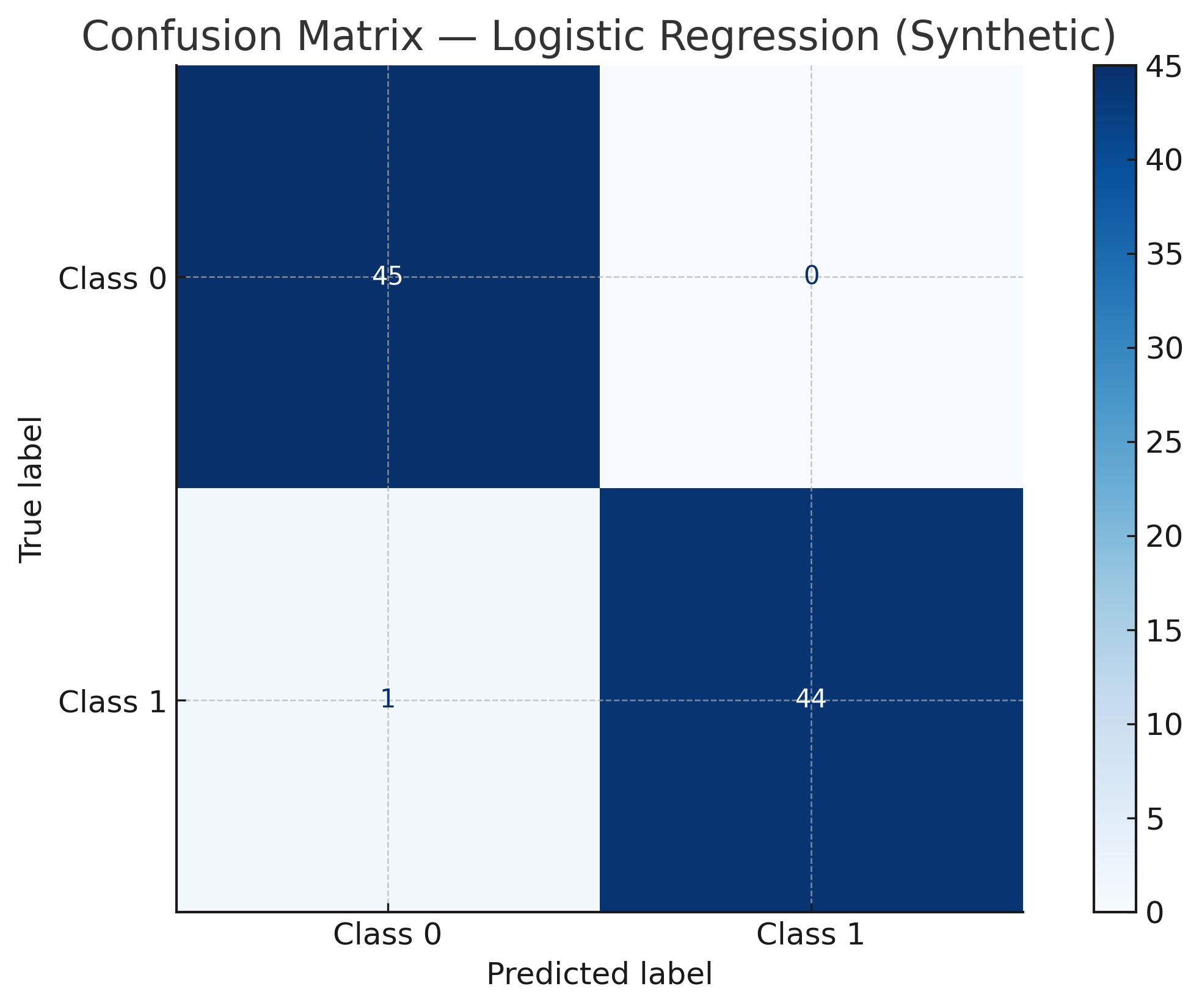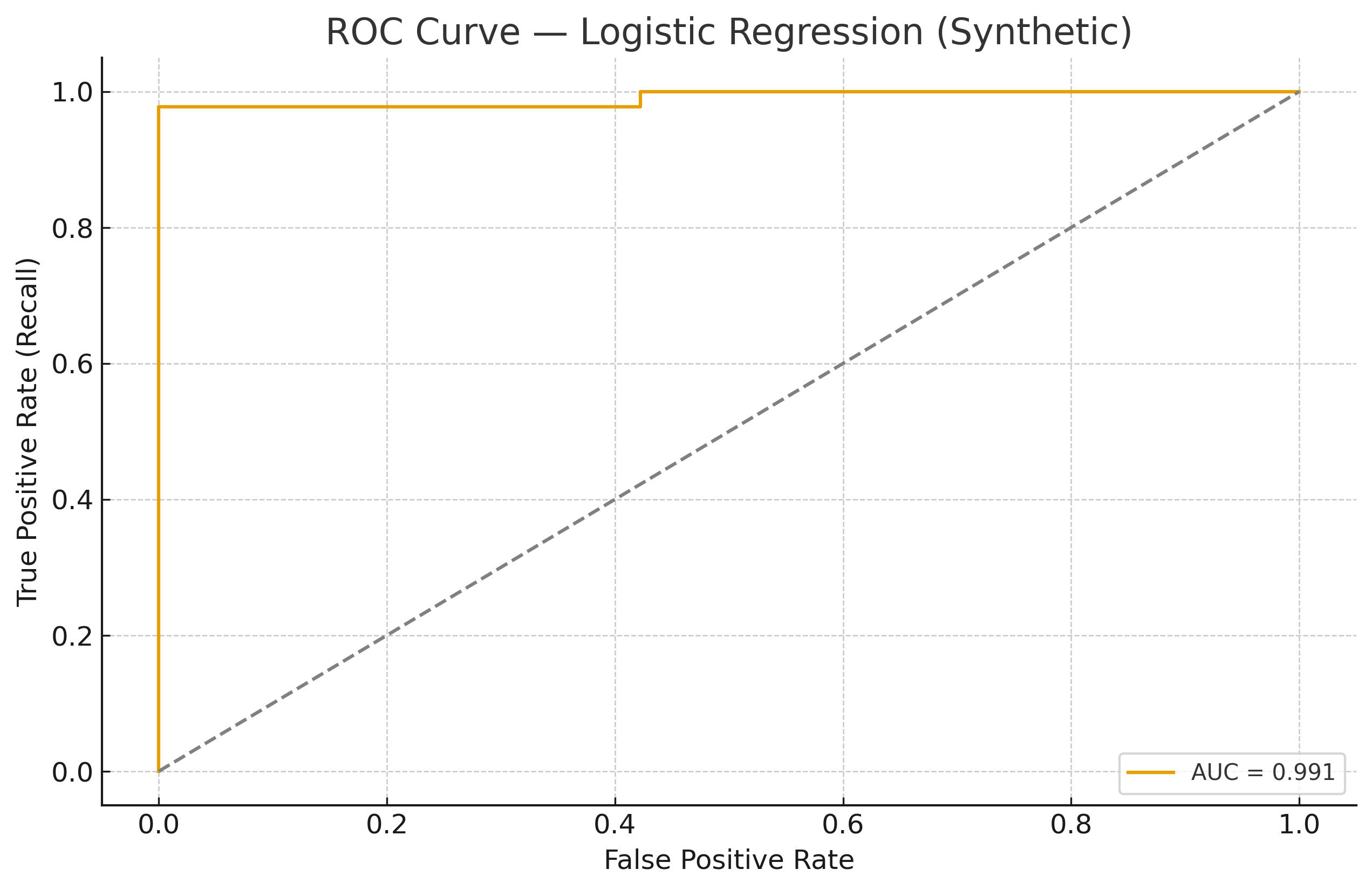🤖 Chapter 15 — Classification¶
Principles of classification, Confusion Matrix, Precision, Recall, F1, and AUC–ROC with theory, math, a worked example.
1) Classification Principles¶
Classification predicts discrete labels by learning a function: $$ f: \mathbb{R}^n \to {1,2,\dots,K},\qquad f^* = \arg\min_f\; \mathbb{E}_{(x,y)}[L(y,f(x))]. $$
Binary setup uses a score \(s(x)\) and threshold \(\tau\): $$ \hat y = \begin{cases} 1,& s(x)\ge \tau \ 0,& s(x)<\tau \end{cases} $$
graph TD
A[Features] --> B[Classifier]
B --> C[Predicted Label]2) Confusion Matrix¶
| Predicted + | Predicted - | |
|---|---|---|
| Actual + | True Positive (TP) | False Negative (FN) |
| Actual - | False Positive (FP) | True Negative (TN) |
Derived rates: $$ \text{TPR}=\frac{TP}{TP+FN}\quad(\text{Recall}),\qquad \text{FPR}=\frac{FP}{FP+TN}. $$
By‑hand example: TP=8, FP=2, TN=7, FN=3
Accuracy=0.75, Precision=0.80, Recall=0.727, F1≈0.762
Visualization (synthetic):

3) Precision, Recall, F1¶
When to favor each: Precision (costly FP), Recall (costly FN), F1 (balance).
4) ROC Curve and AUC¶
Vary \(\tau\) to get points \((\text{FPR}(\tau),\text{TPR}(\tau))\) forming the ROC curve.
AUC = area under ROC; probability a random positive is ranked above a random negative.
Visualization (synthetic):

6) Practice Questions¶
- Derive Precision, Recall, and F1 from the confusion matrix.
- Explain why AUC is threshold‑independent.
- Compare ROC and Precision–Recall curves.
- Why can accuracy be misleading for imbalanced datasets?
- Show how moving the decision threshold affects Precision and Recall.